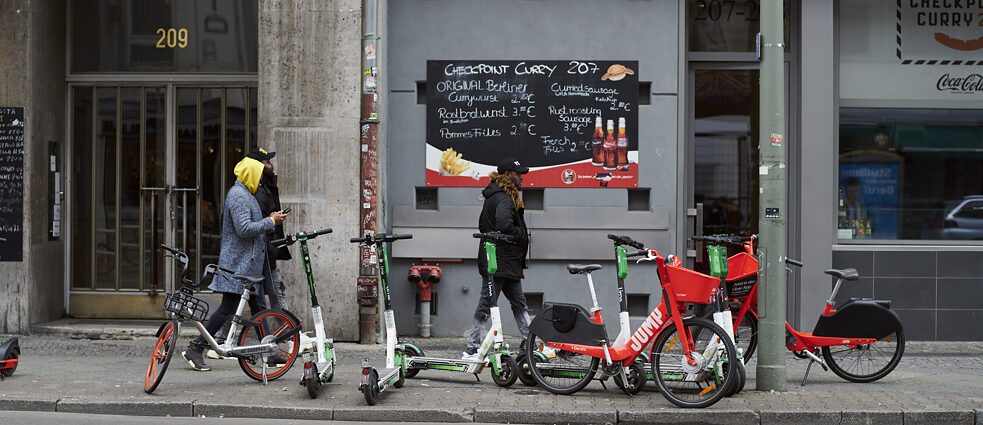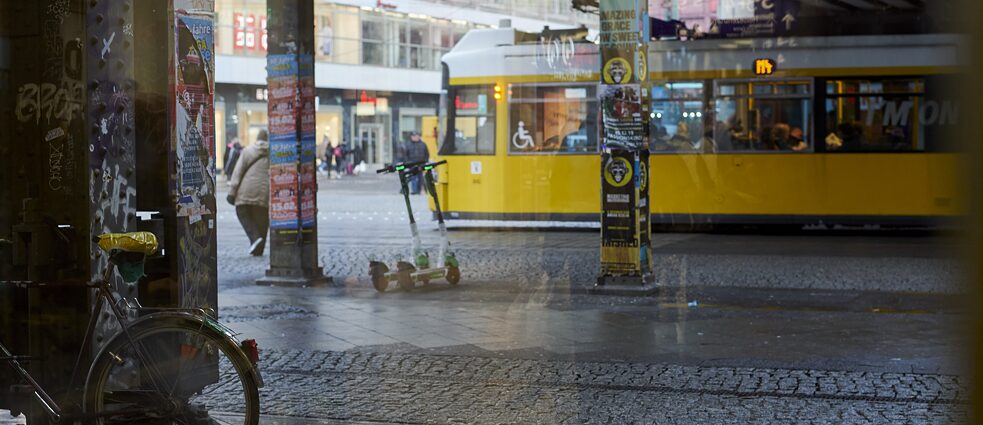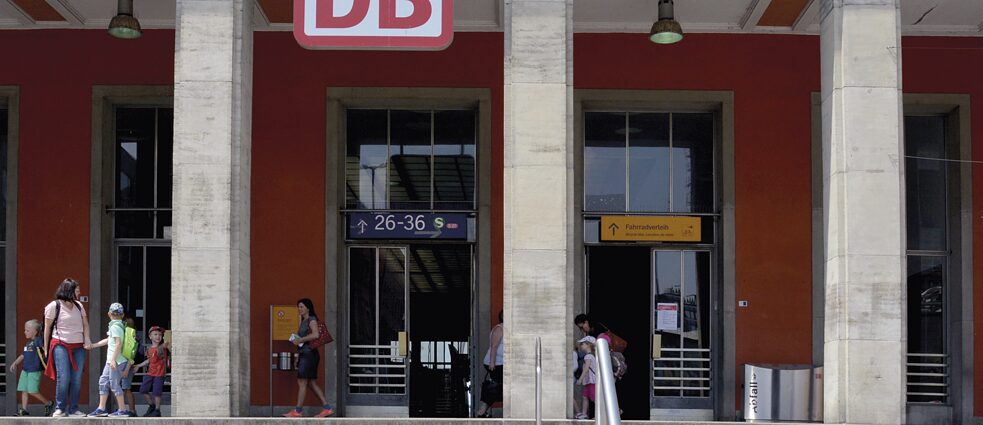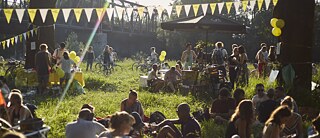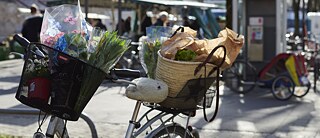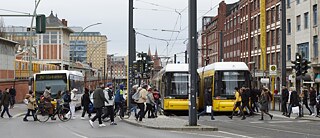
On foot and by bike
In villages and smaller towns you can usually reach most destinations on foot. Many people in Germany cycle to the supermarket or to work. There are cycle paths on many roads. Where there is no cycle path, adults must cycle on the street. Children under the age of 8 must cycle on the pavement. Children under the age of 10 may cycle on the pavement. There are other rules applying to pedestrians and cyclists in traffic: for instance if you cross on a red light. Or your bike light is broken. If the police see you, you have to pay a fine.
Using public transport
In cities there is public transport such as regional trains (S-Bahn), underground railways (U-Bahn), trams (Straßenbahn, or Trambahn in South Germany) and buses. You usually buy the ticket from a machine at the stations and stops. There are ticket offices in stations. Sometimes you can also buy tickets on the bus. You can also buy a travel pass for a week, a month or a year. It works out cheaper if you use public transport regularly. Children, students, disabled passengers and the elderly are often entitled to concessionary rates. They pay less. There are ticket checks in buses and trains. If you don’t have a ticket when you are checked, you have to pay a fine.
You can also find the timetables at stops and stations. The timetable shows when the buses and trains depart and their destinations. But you can also get this information from the transport company website.
By car
Many people also travel around town in their own cars. Many towns have car-parks and multi-storeys: there are signs at the side of the road to show you these parking facilities. You frequently have to pay for these car-parks. If you drive a car, you must always carry your driving licence and vehicle registration document. If you are stopped, the police will ask to see them.
Travelling further afield
Do you want to travel to other German cities or abroad? You can do this by train, plane and bus. The pick-up point for buses is near the main railway station in most towns/cities. For longer journeys there are long-distance coaches available. In Germany there are a number of providers. They go to many different cities in Germany and Europe. If you book early enough, tickets can be particularly inexpensive. Long distance buses are very comfortable and often have Wi-Fi. You can find when which bus leaves and where they go at www.fernbusse.de.
You usually use Deutsche Bahn for long-distance rail travel. Savings are often available: if you book early, you can get cheap tickets. The same applies to air travel. Large ships also sail to the islands in the North Sea and the Baltic.
Related links
Video International Sign
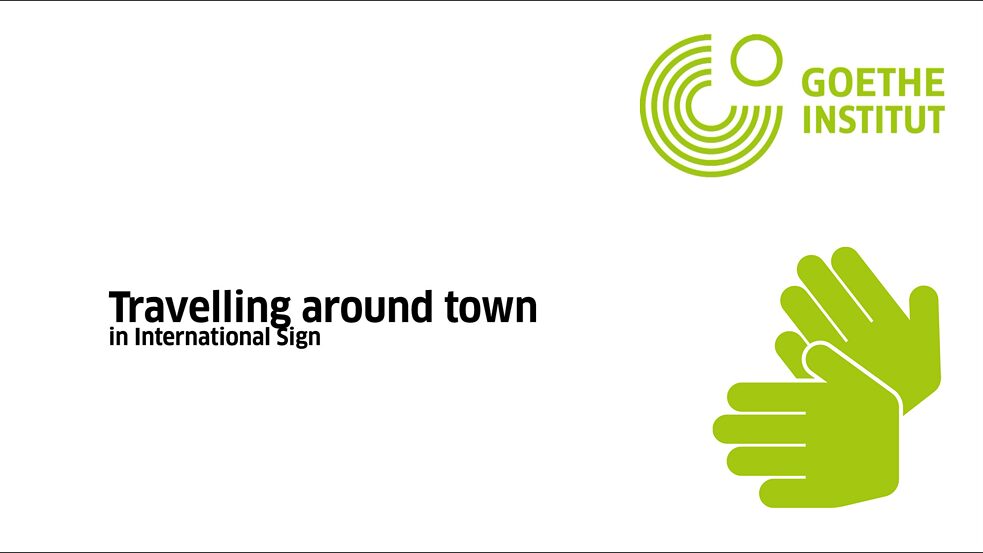
Frequently asked questions
Further questions? Write us via the contact form. We will forward your questions anonymously to the advisors of the youth migration services.
Contact form